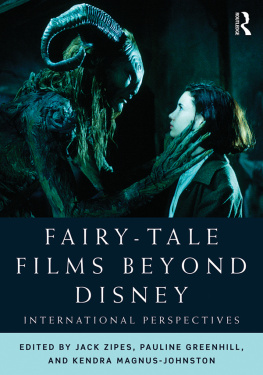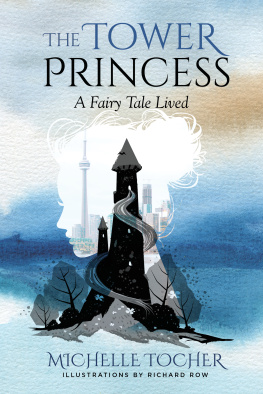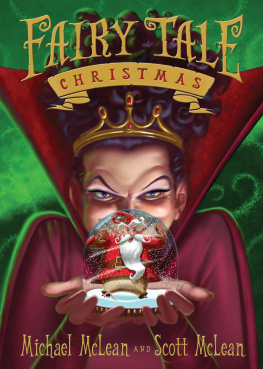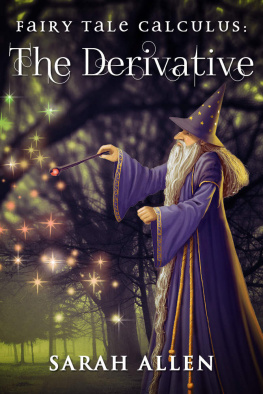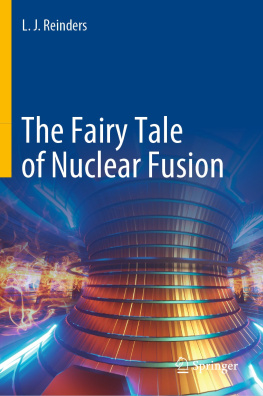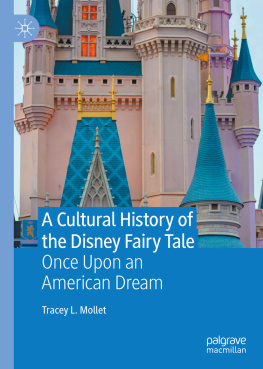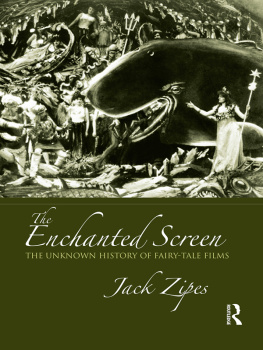Fairy-Tale Films Beyond Disney - Fairy-Tale Films Beyond Disney
Here you can read online Fairy-Tale Films Beyond Disney - Fairy-Tale Films Beyond Disney full text of the book (entire story) in english for free. Download pdf and epub, get meaning, cover and reviews about this ebook. publisher: Taylor & Francis (CAM), genre: Home and family. Description of the work, (preface) as well as reviews are available. Best literature library LitArk.com created for fans of good reading and offers a wide selection of genres:
Romance novel
Science fiction
Adventure
Detective
Science
History
Home and family
Prose
Art
Politics
Computer
Non-fiction
Religion
Business
Children
Humor
Choose a favorite category and find really read worthwhile books. Enjoy immersion in the world of imagination, feel the emotions of the characters or learn something new for yourself, make an fascinating discovery.
- Book:Fairy-Tale Films Beyond Disney
- Author:
- Publisher:Taylor & Francis (CAM)
- Genre:
- Rating:4 / 5
- Favourites:Add to favourites
- Your mark:
- 80
- 1
- 2
- 3
- 4
- 5
Fairy-Tale Films Beyond Disney: summary, description and annotation
We offer to read an annotation, description, summary or preface (depends on what the author of the book "Fairy-Tale Films Beyond Disney" wrote himself). If you haven't found the necessary information about the book — write in the comments, we will try to find it.
Fairy-Tale Films Beyond Disney — read online for free the complete book (whole text) full work
Below is the text of the book, divided by pages. System saving the place of the last page read, allows you to conveniently read the book "Fairy-Tale Films Beyond Disney" online for free, without having to search again every time where you left off. Put a bookmark, and you can go to the page where you finished reading at any time.
Font size:
Interval:
Bookmark:
First published 2016
by Routledge
711 Third Avenue, New York, NY 10017
and by Routledge
2 Park Square, Milton Park, Abingdon, Oxon OX14 4RN
Routledge is an imprint of the Taylor & Francis Group, an informa business
2016 Taylor & Francis
The right of the editor to be identified as the author of the editorial material, and of the authors for their individual chapters, has been asserted in accordance with sections 77 and 78 of the Copyright, Designs and Patents Act 1988.
All rights reserved. No part of this book may be reprinted or reproduced or utilized in any form or by any electronic, mechanical, or other means, now known or hereafter invented, including photocopying and recording, or in any information storage or retrieval system, without permission in writing from the publishers.
Trademark notice: Product or corporate names may be trademarks or registered trademarks, and are used only for identification and explanation without intent to infringe.
Library of Congress Cataloging-in-Publication Data
Fairy-tale films beyond Disney : international perspectives / edited by Jack Zipes, Pauline
Greenhill, and Kendra Magnus-Johnston.
pages cm
Includes bibliographical references and index.
Includes filmography.
1. Fairy tales in motion pictures. I. Zipes, Jack, 1937 editor. II. Greenhill, Pauline,
editor. III. Magnus-Johnston, Kendra.
PN1995.9.F34F33 2015
791.436559dc23
2015007822
ISBN: 978-0-415-70929-3 (hbk)
ISBN: 978-0-415-70930-9 (pbk)
ISBN: 978-1-315-88562-9 (ebk)
Typeset in ApexBembo
by Apex CoVantage, LLC

In 2011, after I had finished writing The Enchanted Screen: The Unknown History of Fairy-Tale Films , I realized just how much I still did not know about the cinematic adaptation of folktales and fairy tales worldwide, and how much I had not covered in that book. Since I had spent five years working on The Enchanted Screen , I had also become fully aware that I would not be able to write a second, more comprehensive, book on the filmic adaptation of folktales and fairy tales by myself. Fortunately, soon after the completion of The Enchanted Screen I was invited by Pauline Greenhill to join a research group based at the University of Winnipeg. Indeed, her invitation was a stroke of good luck because I quickly recognized that Pauline, who had recently co-edited Fairy Tale Films: Visions of Ambiguity (Greenhill and Matrix 2010), was a dynamo and had gathered together a number of talented scholars of folktales and fairy tales, one of whom was Kendra Magnus-Johnston. After three days of presentations of projects and discussions at the first Winnipeg meeting, I knew I had to act and be opportunistic, not unlike the troubled and fortunate protagonists of fairy tales themselves. I asked Pauline and Kendra if they might join me and develop a second book dealing with fairy-tale films that would cover international developments and focus on cinematic adaptations of folktales and fairy tales in the latter part of the twentieth century and the beginning of the twenty-first. Their welcome response and effective work have led to the production of the present book.
Although there has been an awakening among scholars in the fields of folklore, fairy-tale studies, and cinema studies, who have produced numerous significant essays and a few books about fairy-tale films, this development is still limited to a small group of critics. The relative lack of attention to fairy-tale films is somewhat stunning, given the fact that the production of both Hollywood fairy-tale films, which tend to be global blockbusters, and the wealth of provocative, mainly independent fairy-tale films, have created what I call a cultural tsunami. What is even more astounding is that film critics seem to be puzzled by the attention filmmakers, producers, studios, and TV networks have been paying to fairy tales and folktales when these stories have provided the stuff of which all films are made from the 1890s to the present, beginning with the work of Georges Mlis.
I realize that this claim may seem a gross exaggeration; however, the history of folktales and fairy tales demonstrates the degree to which such narratives have pervaded cultural fields including theater, opera, radio plays, painting, vaudeville, musicals, comics, novels, and so on. Indeed, this cultural saturation demands that the motifs, themes, and structures of folktales and fairy tales must be studied if one wants to grasp the complex implications of the works produced in these respective fields. Yet, almost all the books that deal with the history of film and cinematic adaptation of literary works fail to cover or even mention the adaptation and use of folktales and fairy tales. The fairy-tale film seems to be a neglected or abused stepchild, especially in those cultural fields where one would expect better treatment.
In Simone Murrays recent pioneer study The Adaptation Industry: The Cultural Economy of Contemporary Literary Adaptation (2012), there is not one word about the adaptation of literary fairy tales or even about the prolific Disney adaptation industry. Murray states:
The Adaptation Industry is designed to showcase a broadly sociological approach to adaptation, foregrounding those issues usually pushed to the margins of adaptation studies work: the industrial structures, interdependent networks of agents, commercial contexts, and legal and policy regimes within which adaptations come to be. This economy-passing adaptation industry both constrains andcrucially enables adaptations in little-analysed ways. In particular, this study posits cultural and commercial concerns not as mutually antithetical or self-cancelling but as complexly interrelated.
(2012, 6)
This is all well and good, and Murrays book lays the groundwork for comprehensive sociological studies of the adaptation of literary works for the cinema. And yet, like other film historians and scholars, she neglects to include and analyze the adaptation of folktales and fairy tales. One would expect at least some remarks about the Disney industry and its socio-economic role in the development of literary adaptation not only in the United States, but in the world. Not a word. One would expect some mention of interrelated studies of fairy-tale films produced by folklorists and literary critics of fairy tales. Not a word.
Though our present book does not cover all the aspects of adaptation that Murray believes need to be addressed in her sociological approach, the writers speak to many facets she mentions and more. In keeping with what Cristina Bacchilega calls the fairy-tale web in her highly significant book, Fairy Tales Transformed? Twenty-First-Century Adaptations and the Politics of Wonder (2013), our contributors write about the development of fairy-tale films on six continents and discuss the interrelationships between local and global industries and the unique production of fairy-tale films in many different countries. While the essays in this collection examine and analyze films that have sought to transcend Disneys monopolistic network to produce highly experimental and innovative fairy-tale films, at the same time, we acknowledge the ongoing cultural legacies of Disney fairy-tale films as well as the potential that exists beyond them. As a result, I hope that this collaborative book will add to the growing interdisciplinary study of fairy-tale films and prompt more scholars to take fairy tales more seriously than they have in the past.
We all thank the contributors for their perseverance, and the editorial staff at Routledge, especially Erica Wetter, Simon Jacobs, and Emily How for their ongoing support. We gratefully acknowledge funding for the project, Fairy-Tale Films: Exploring Ethnographic Perspectives, from the Social Sciences and Humanities Research Council of Canada [SSHRC] 20112015, and for Fairy-Tale Cultures and Media Today, 20142018, also from SSHRC, as well as the University of Winnipeg Research Office for a grant. We thank Victoria Brown for copyediting, and Kristy Stewart for doing the index. Once again, I want personally to thank the faerie powers who brought me together with Pauline and Kendra and provided us with the indefatigable Lauren Bosc, who has added a magic touch to our efforts.
Font size:
Interval:
Bookmark:
Similar books «Fairy-Tale Films Beyond Disney»
Look at similar books to Fairy-Tale Films Beyond Disney. We have selected literature similar in name and meaning in the hope of providing readers with more options to find new, interesting, not yet read works.
Discussion, reviews of the book Fairy-Tale Films Beyond Disney and just readers' own opinions. Leave your comments, write what you think about the work, its meaning or the main characters. Specify what exactly you liked and what you didn't like, and why you think so.

